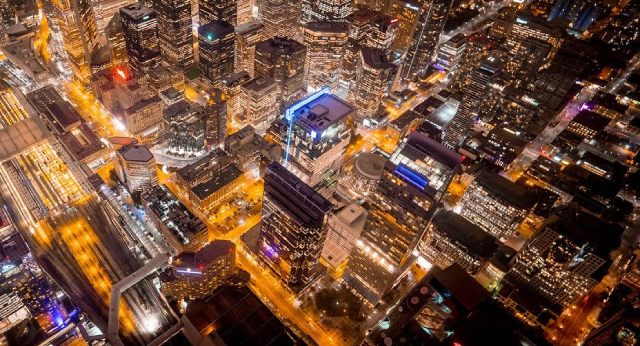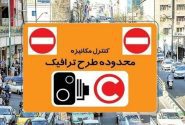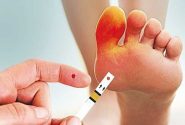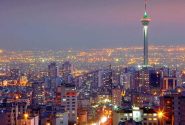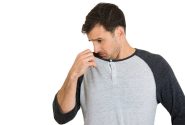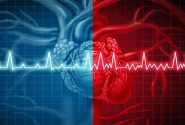به گزارش پایگاه خبری تحلیلی تسریر، به نقل از مدیسن نت، یک مطالعه جدید نشان میدهد که خطر سکته با آلودگی نوری در فضای باز افزایش مییابد و ۸۰ درصد افراد ممکن است تحت تأثیر قرار بگیرند.
این مطالعه شامل بیش از ۲۸۰۰۰ نفر بود که در یک شهر بزرگ در چین زندگی می کردند.
محققان دریافتند افرادی که در شب در معرض بالاترین میزان نور مصنوعی در فضای باز قرار میگیرند، در مقایسه با افرادی که کمترین میزان در معرض قرار گرفتن را داشتند، ۴۳ درصد بیشتر در معرض خطر ابتلا به بیماریهای عروق مغزی قرار داشتند. بیماری عروق مغزی شامل سکته مغزی و سایر شرایطی است که بر جریان خون بر مغز تأثیر می گذارد.
مطالعات قبلی افزایش قرار گرفتن در معرض نور مصنوعی و روشن را با ایجاد بیماری های قلبی عروقی که شرایط مربوط به جریان خون در شریان ها هستند، مرتبط دانسته اند.
محققان گفتند این اولین مطالعه ای است که رابطه بین نور در شب و سلامت مغز را بررسی می کند.
دکتر Jianbing Wang یکی از نویسندگان این مطالعه در یک بیانیه خبری گفت: “مطالعه ما نشان می دهد که سطوح بالاتر قرار گرفتن در معرض نور مصنوعی در فضای باز در شب ممکن است یک عامل خطر برای بیماری عروق مغزی باشد.”
محقق وانگ که در بخش های بهداشت عمومی و غدد درون ریز بیمارستان کودکان، دانشکده پزشکی دانشگاه ژجیانگ و مرکز ملی تحقیقات بالینی برای سلامت کودکان در هانگژو، چین است، گفت: «مردم، به ویژه آنهایی که در مناطق شهری زندگی می کنند، باید برای محافظت از خود، کمتر در معرض نور مصنوعی در فضای باز در شب قرار گیرند.»
این مطالعه روز دوشنبه در American Heart Association journal Stroke منتشر شد.
از هر پنج نفر چهار نفر در محیط های آلودگی نوری زندگی می کنند
نویسندگان این مطالعه گفتند که حدود ۸۰ درصد از جمعیت جهان در محیط های آلودگی نوری زندگی می کنند. قرار گرفتن مداوم در معرض نور مصنوعی در شب می تواند تولید ملاتونین، هورمونی که خواب را تقویت می کند، سرکوب کند.
به گفته محققان، افرادی که خواب ضعیفی دارند، در مقایسه با افرادی که خوب میخوابند، با گذشت زمان بیشتر از سلامت قلبی عروقی رنج میبرند. این مطالعه شامل ۲۸۳۰۲ بزرگسال ساکن نینگبو، یک شهر بندری صنعتی با بیش از ۸.۲ میلیون نفر در سواحل شرقی چین بود. تقریبا ۶۰ درصد از شرکت کنندگان زن بودند و میانگین سنی آنها ۶۲ سال بود.
در میان افرادی که در معرض نور شدید بیرون از منزل در شب قرار گرفته بودند که از این مطالعه حذف شدند، افرادی وجود داشتند که قبلاً به بیماری عروق مغزی مبتلا شده بودند.
تجزیه و تحلیل و پیگیریها از سال ۲۰۱۵ تا ۲۰۲۱ انجام شد. قرار گرفتن در معرض نور شبانه فضای باز مسکونی توسط تصاویر ماهوارهای که آلودگی نوری را ترسیم میکردند، ارزیابی شد. موارد سکته مغزی با مدارک پزشکی بیمارستانی و گواهی فوت تایید شد.
در میان شرکت کنندگان در این مطالعه، ۱۲۷۸ نفر به بیماری عروق مغزی مبتلا شدند، از جمله ۷۷۷ مورد سکته مغزی ایسکمیک، شایع ترین نوع سکته، که در آن لخته جریان خون را به مغز مسدود می کند.
آلودگی هوا خطر سکته مغزی را افزایش می دهد
این مطالعه همچنین سطوح آلودگی هوا را مورد بررسی قرار داد و دریافت که اثرات احتمالی آن مستقل از قرار گرفتن در معرض نور است.
افرادی که در معرض بالاترین میزان آلودگی هوا مرتبط با احتراق بنزین، نفت، سوخت دیزل یا چوب قرار داشتند، در مقایسه با شرکتکنندگانی که کمترین میزان مواجهه را داشتند، ۴۱ درصد بیشتر در معرض خطر ابتلا به بیماریهای عروق مغزی وجود داشتند.
افرادی که در معرض بالاترین میزان آلودگی هوا ناشی از گرد و غبار یا دود قرار داشتند، در مقایسه با افرادی که در کمترین میزان قرار داشتند، ۵۰ درصد بیشتر در معرض خطر بیماری عروق مغزی وجود داشتند.
و افرادی که در معرض بالاترین سطوح نیتروژن اکسید ناشی از گازهای گلخانه ای وسایل نقلیه موتوری و نیروگاهی قرار داشتند، در مقایسه با افرادی که کمترین میزان تماس را داشتند، ۳۱ درصد بیشتر در معرض خطر بیماری عروق مغزی وجود داشتند.
وانگ گفت: «علیرغم پیشرفت های قابل توجه در کاهش عوامل قلبی عروقی مانند سیگار کشیدن، چاقی و دیابت نوع ۲، در نظر گرفتن عوامل محیطی برای کاهش بیماری های قلبی عروقی مهم است.
به گفته نویسندگان، این مطالعه از جمعیت یک شهر بوده است، بنابراین این یافته ها ممکن است در مورد افراد جوامع دیگر صدق نکند. همچنین، محصولات مبتنی بر ماهواره به ندرت منابع نور آبی را جذب می کنند، که ممکن است منجر به ارتباط کمی بین نور فضای باز در شب و بیماری عروق مغزی شود.
وانگ گفت: «ما باید سیاستها و استراتژیهای پیشگیری مؤثرتری برای کاهش بیماری ناشی از عوامل محیطی مانند نور و همچنین آلودگی هوا، بهویژه برای افرادی که در پرجمعیتترین و آلودهترین مناطق در سراسر جهان زندگی میکنند، توسعه دهیم.»
Stroke risk increases with outdoor light pollution and 80% of people could be affected, a new study finds.
Too much exposure to bright outdoor lights at night may increase a person’s stroke risk, new research suggests.
The study involved more than 28,000 people living in a large city in China.
Researchers found that people exposed to the highest levels of artificial outdoor light at night had a 43 per cent increased risk of developing cerebrovascular disease, as compared to those with the lowest levels of exposure. Cerebrovascular disease includes stroke and other conditions affecting blood flow to the brain.
Previous studies have linked increased exposure to bright, artificial light to the development of cardiovascular disease, which are conditions related to blood flow in arteries. Researchers said their study is one of the first to explore the relationship between light at night and brain health.
“Our study suggests that higher levels of exposure to outdoor artificial light at night may be a risk factor for cerebrovascular disease,” study co-author Dr Jianbing Wang said in a news release.
Wang is a researcher in the departments of public health and endocrinology of the Children’s Hospital, Zhejiang University School of Medicine and the National Clinical Research Center for Children’s Health in Hangzhou, China.
People, especially those living in urban areas, should consider reducing that exposure to protect themselves, he said.
The study was published Monday in the American Heart Association journal Stroke.
Four out of five people live in light-polluted environments
About 80 per cent of the world’s population lives in light-polluted environments, the study’s authors said.
Continuous exposure to artificial light at night can suppress production of melatonin, a hormone that promotes sleep. People with poor sleep, compared to good sleepers, are more likely to experience worse cardiovascular health over time, the researchers said.
The study involved 28,302 adults living in Ningbo, an industrial port city of more than 8.2 million people on China’s east coast. Almost 60 per cent of the participants were women, and the average age was 62. Among those excluded from the study were people with extreme levels of exposure to outdoor light at night, people previously diagnosed with cerebrovascular disease and those who developed it within a year after enrolling.
The analysis and follow-ups were conducted from 2015 to 2021. Exposure to residential outdoor nighttime light was assessed by satellite images that mapped light pollution. Cases of stroke were confirmed by hospital medical records and death certificates.
Among the study participants, 1,278 people developed cerebrovascular disease, including 777 cases of ischemic stroke, the most common type of stroke, where a clot blocks blood flow to the brain.
Air pollution increases stroke risk
The study also looked at levels of air pollution and found its possible effects to be independent from light exposure.
People exposed to the highest levels of the type of air pollution associated with the combustion of gasoline, oil, diesel fuel or wood had a 41 per cent increased risk of developing cerebrovascular disease compared to participants with the lowest levels of exposure.
People exposed to the highest levels of air pollution caused by dust or smoke had a 50 per cent increased risk of cerebrovascular disease compared to those exposed to the lowest levels.
And those exposed to the highest levels of nitrogen oxide from motor vehicle and power plant emissions, had a 31 per cent higher risk of cerebrovascular disease compared to those with the lowest exposure.
“Despite significant advances in reducing traditional cardiovascular risk factors such as smoking, obesity and Type 2 diabetes, it is important to consider environmental factors in our efforts to decrease the global burden of cardiovascular disease,” Wang said.
The population studied was from one city, so the findings may not apply to people in other communities, the authors said. Other limitations include a lack of data on indoor lighting products or shading measures such as blackout curtains. Also, satellite-based products rarely capture blue light sources, which may lead to an underestimated association between outdoor light at night and cerebrovascular disease.
“We need to develop more effective policies and prevention strategies to reduce the burden of disease from environmental factors such as light as well as air pollution, particularly for people living in the most densely populated, polluted areas around the world,” Wang said.
تسریر مراقب سلامتی شماست!

